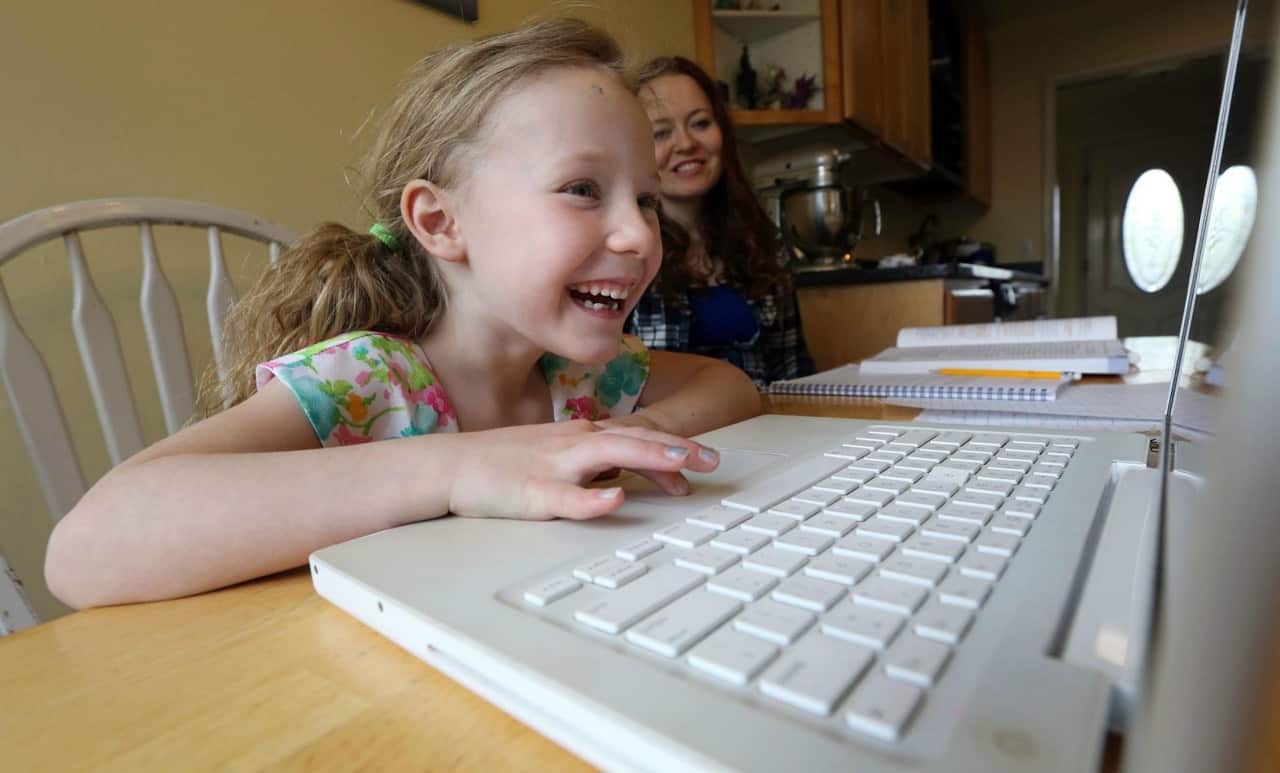Young children are naturally aware of family routines and want to be a part of them.[1] But why set a learning-specific routine for your child? According to research, routines around learning offer a lot of benefits.[2,3] For example, they can:
- Promote safety and belonging
- Teach responsibility and self-control
- Guide positive behavior
- Help children cope with transitions or change
Whether you’re distance learning at home due to the COVID-19 pandemic or simply want less stress over homework at night, a family learning routine can help. We’ve put together seven tips for creating a strong home learning routine.
 Remember the Three Keys
Remember the Three Keys
According to the CDC, there are three parts to creating structure at home: consistency, predictability, and follow-through. Keep these keys in mind as you create a learning environment where your child can focus and knows what to expect.
To promote predictability, you could practice reading with your child at the same time each day. Or to encourage follow-through, you could promise to help your child with their homework when you get home from work and make sure you do so.
Set and Keep to a Schedule
Schedules make routines easier, and they can help your child adjust to learning at home. According to the Notre Dame of Maryland University, the best learning schedules take your child’s assignments and your own workload into consideration.
Every family’s learning routine may look different, but the important thing is that you make a daily schedule that works for you and your child. For younger children, consider using images or pictures to show the schedule so that they can follow it without needing to read the words perfectly.
Bring Play Into Learning
There are three important ways play helps a child learn: it teaches communication, helps with brain development, and encourages relationship-building. While there’s a time and place for traditional assignments, include a few playful learning activities in your day.
For example, to help your child learn the alphabet, you could create this sensory letter craft from the Waterford.org YouTube channel. Simple activities like this let your child practice letter recognition in a way that uses their senses and teaches skills in a new way.
Set Daily or Weekly Goals
Keeping kids focused on learning can be tough if they’re not in class. But according to Johns Hopkins Medicine staff writer Kate Loguercio, setting specific daily or weekly goals can help children focus on and engage with their assignments.
Here’s a quick example of a goal to get you started. If your child is learning multiplication, your child’s goal might be to memorize three multiplication cards each day. Additionally, include a few non-academic goals—like exercising or making a recipe, for example—to help children have more well-rounded growth and learning.
 Connect New Concepts to Real-Life Experiences
Connect New Concepts to Real-Life Experiences
Learning doesn’t have to stop when you close your child’s textbook. Connecting real-life situations to what your child is learning in class or online can help them understand concepts better and make meaning both in class and at home, according to the National Center for Families Learning.
Think of ways to talk about what your child is learning during your family’s daily routine. While you’re at the store, for example, have your child help you count up the change you need to buy an item or look for specific letters or words on the signs.
Include Time for Breaks
According to PBS Kids contributor Suzanne Bouffard, three types of breaks are important to include in your child’s learning routine. These include time to go outside, quiet time, and meal or snack times.
Set aside time for these breaks in a way that works for your child. After reading together you could go for a walk around your neighborhood. Or after finishing an assignment, enjoy a healthy snack together.
You could also schedule a few brain breaks, which are breaks designed to help students decompress after time spent learning. We Are Teachers contributor Elizabeth Mulvahill has put together a list of 50 brain breaks that can be done from home.
Prioritize Active Screen Time as Needed
As many schools move at least some learning online, the American Academy of Pediatrics recommends parents focus on keeping screen time positive and useful. Instead of worrying too much about total screen time, choose educational content to help your child learn and set limits that make sense for your family.
Also, try to prioritize active screen time over passive activities, especially while children are learning. Active screen time (like an educational game or a video chat with a relative) gives children opportunities to engage with the activity in ways that passive screen time (like a TV show or movie) does not.
Sources:
- Spagnola, M., and Fiese, B.H. Family Routines and Rituals: A Context for Development in the Lives of Young Children. Retrieved from lww.com: https://journals.lww.com/iycjournal/Fulltext/2007/10000/Family_Routines_and_Rituals__A_Context_for.2.aspx
- Raising Children Staff. Family routines: how and why they work. Retrieved from raisingchildren.net.au: https://raisingchildren.net.au/grown-ups/family-life/routines-rituals-relationships/family-routines#children-why-routines-are-good-for-them-nav-title
- Zero to Three Staff. Creating Routines for Love and Learning. Retrieved from zerotothree.org: https://www.zerotothree.org/resources/223-creating-routines-for-love-and-learning

